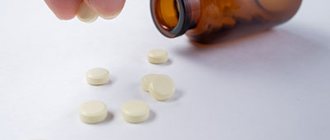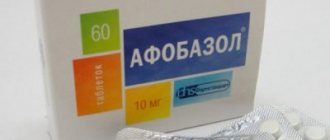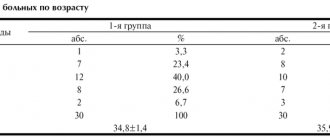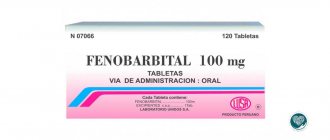Phenazem, a medicine first synthesized in the Soviet Union in 1975, was created to treat various neurological and psychological disorders. This benzodiazepine, similar to Valium, has a sedative effect on the patient.
As a central nervous system depressant with sedative properties, this drug is suitable for the treatment of anxiety and panic disorders, as well as epilepsy, insomnia, neuroses and alcohol withdrawal syndrome. The drug is available in powder form, in tablet form or in the form of a liquid solution. Nowadays it is increasingly used for recreational purposes. Indications for use
In the CIS, Phenazepam is used to treat the following symptoms:
• anxiety • insomnia • neurosis • increased irritability • brief psychosis • alcohol withdrawal syndrome • temporal lobe epilepsy • panic disorder
Phenazepam dosage
• In Russia, phenazepam tablets are usually given 2-3 times a day. Each dose ranges from 0.25 to 0.5 mg, depending on the patient's needs. In clinical settings, the dose may be increased to 3-5 mg per day.
Phenazepam overdose
An overdose of benzodiazepines can be extremely dangerous and fatal. The maximum safe dosage of the drug is 10 mg for one day.
Possible symptoms of phenazepam overdose: • loss of consciousness • depressed breathing • delirium • slurred speech • inability to stand or move • unresponsiveness
Content:
- When does an overdose of Phenazepam occur?
- Consequences of an overdose of Phenazepam - symptoms.
- Chronic form of pathology.
- Diagnostics.
- How to provide first aid to a victim.
- Complications of an overdose of Phenazepam.
Phenazepam is a tranquilizer; the drug calms the nervous system, relieves anxiety, eliminates obsessive thoughts and fears, and helps normalize sleep. An overdose of Phenazepam can have the most serious consequences - from daytime drowsiness to coma and death.
The medicine is usually prescribed by psychiatrists and psychotherapists for insomnia, anxiety disorders, and to alleviate hangover syndrome as part of complex therapy. Available in pharmacies strictly according to prescription.
When does an overdose of phenazepam occur?
Despite the fact that Phenazepam is an excellent remedy for many pathological conditions, doctors often encounter an overdose of this pharmaceutical. The fact is that this medicine is quickly addictive, as a result of which people often independently increase the permissible dosage. The consequences of this can be: suicidal thoughts, impaired memory and coordination of movements, depression and even fainting.
In addition to cases where the pathology is caused by an increase in the daily dose, suicide attempts occur. People who decide to commit suicide take prohibitively large amounts of pharmaceuticals.
Another fairly common phenomenon is drug addiction. Just as a person becomes “addicted” to drugs or alcohol, he or she will be able to become unnoticed when taking a medication. This phenomenon is called “pharmacy drug addiction”; the consequences of an excess of Phenazepam are completely unpredictable.
How long does phenazepam stay in the body?
The half-life of phenazepam is 6-18 hours, but its active metabolite 3-hydroxyphenazepam remains in the human body for up to 60 hours. The drug is detectable in urine for up to several weeks and in the blood for 3-4 days.
Risks of Phenazapem Abuse
Recreational abuse of phenazepam poses several significant health risks. When a person remains under the influence of a drug for too long, the drug can harm the person's mental and physical health, as well as cognitive function.
Phenazepam abuse can cause depression, fatigue, sexual dysfunction, memory problems, brain damage, suicidal behavior, anxiety and coma. Phenazepam Dependence The drug causes physical dependence after prolonged exposure, whether used recreationally or as directed by a physician.
Anyone can become addicted.
However, dependence on phenazepam always has a psychological component. A person may experience an irresistible urge to use drugs, spend significant amounts of money on drugs, ignore the negative consequences of drug use, and experience problems in relationships with other people.
Simple detoxification is enough to break physical addiction, but it is not enough to fight addiction. A person dependent on a benzodiazepine may also relapse without the appropriate one. simultaneous treatment of mental disorders that complement detox.
Therefore, dependence on phenazepam requires treatment under the supervision of medical professionals.
Remember that if you or your loved ones are faced with the problem of abuse of any substances, the specialists of the Narkozdrav clinic are always ready to help you
Other useful articles on the topic:
Tramadol addiction
August 26, 2019
A strong opioid drug that is very popular among teenagers due to its easy availability in pharmacies.
How to overcome withdrawal syndrome?
August 25, 2019
Find out how to cope with the feeling of “withdrawal” during a period of complete drug withdrawal
How to help a drug addict?
August 24, 2019
Consequences of an overdose of Phenazepam - symptoms
At the first sign of an “overdose” in an adult or child, you should immediately consult a doctor. Symptoms of phenazepam poisoning manifest themselves differently, depending on the severity.
- In a mild form, the symptoms are almost invisible both to the person himself and to those around him. Weakness, slight drowsiness, ringing in the ears appear, and sometimes general health worsens. Doctors determine the consequences of such an overdose based on complaints; there are also objective manifestations: drooping of the upper eyelids, involuntary movements of the eyeballs.
- The consequences of slightly exceeding the permissible dose do not adversely affect health; they usually disappear after a night's sleep.
- In a condition of moderate severity, the symptoms are more clearly expressed. This is a retraction of the tongue with a violation of the swallowing process, muscle weakness, general lethargy, and some lethargy. The pupils narrow and react poorly to light.
- Sometimes there is a superficial coma, loss of consciousness, which is often mistaken for sleep. However, it is not possible to wake the person. The most dangerous thing in this case is the appearance of vomiting; the patient risks choking. Therefore, it is very important to urgently call an ambulance if such signs are present.
- The severe form is accompanied by deep coma, agony, and a complete absence of reflexes. Respiratory activity is depressed, the heartbeat is rapid, blood pressure drops to critically low values, and body temperature also drops sharply.
The consequences of severe overdose require immediate intensive care; without it, death is possible.
Signs of a drug addict
Phenazepam affects a person in almost the same way as alcohol - coordination of movements is impaired, speech becomes unintelligible. But there are also specific clinical manifestations:
- pale skin;
- blue corners of lips;
- pupils dilated;
- white coating on the tongue;
- dry mucous membranes.
Most Phenazepam addicts look very thin, sometimes even emaciated, due to decreased appetite. Between doses, the addict feels weak in all limbs and feels a desire to sleep.
Chronic form of pathology
Doctors often encounter cases where a patient takes the prescribed drug regularly, but slightly exceeds the recommended dosage. Such patients complain of constant drowsiness, fatigue, muscle weakness, and increased excitability. They are tormented by anxiety, tearfulness, migraine-type headaches, and sometimes hallucinations.
Objectively, shaking (tremor) of the arms and legs is observed, and convulsive manifestations are often noticeable. Taking this medication in combination with large doses of alcohol is especially dangerous. The consequences of overdose in this case require mandatory treatment and observation by a specialist.
Diagnostics
An experienced doctor will be able to make a diagnosis after examining a person and interviewing him or his relatives, and it is important to find out how long he took Phenazepam and in what dosage.
However, in order to make a correct diagnosis and decide on treatment tactics, an in-depth examination is necessary. To find out the exact amount of the drug in the blood, spectrophotometry is used. Heart rhythm disturbances and other organ pathologies are shown by an ECG. important to know the degree of acid-base imbalance in the blood; it is detected during a hematological study.
Consequences of long-term use
If Phenazepam is taken for a long period of time in dosages exceeding therapeutic ones, the side effects intensify. For example, the manifestations of allergies become more pronounced. Quincke's edema is often associated with itching and peeling of the skin.
Angioedema is dangerous due to respiratory arrest and, as a result, death. While taking a tranquilizer, the risk increases.
Phenazepam worsens the quantitative and qualitative characteristics of blood. After cancellation they are restored. But the long stay of bromodihydrochlorophenylbenzodiazepine in the body makes this impossible. Therefore, drug addicts often get sick, their blood clotting is impaired.
Addicts suffer from severe headaches and find it difficult to retain even small amounts of information in their memory. Over time, independent movement becomes problematic due to developing problems with orientation. Muscle pain increases. Unpleasant sensations that cannot be relieved force you to take a new dose.
Phenazepam, taken in large dosages and for a long time, causes disorders of the cardiovascular system - surges in blood pressure, tachycardia.
How to provide first aid to a victim
First of all, you need to induce vomiting (a pale pink solution of potassium permanganate helps to do this). Next, you need to give the patient an available sorbent (activated carbon or Enterosgel). To remove the drug from the gastrointestinal tract, you must also give a laxative or do a cleansing enema.
Remember that all these actions are possible only in cases where the victim is conscious. In an unconscious state, it is strictly prohibited to independently perform any manipulations at home, since this can cause even greater harm to the person.
High-quality therapy for a serious overdose of Phenazepam can only be provided by a doctor in a hospital. In a hospital setting, the patient is given gastric lavage, cleansing enemas and given medications to increase urination (forced diuresis). The Phenazepam antagonist, glucose and saline solution are administered intravenously.
Complications of an overdose of Phenazepam
In addition to coma, poisoning with this pharmaceutical drug causes complications in various organs and systems. These are severe mental disorders, pathologies of the liver and kidneys, inflammatory processes in the genitourinary system, malfunctions of the gastrointestinal tract and the central nervous system.
In order to minimize risks, it is necessary to consult a doctor at the first symptoms. Remember that in this case, delay or independent attempts to remove the patient from a serious condition often lead to complications and even death. Don't waste your precious time and consult a doctor.
Drug test
The study of biological materials - urine, blood, saliva, as well as tissues - hair, nails is required when applying for work in law enforcement agencies, studying at universities of the same system. But the primary task is the choice of therapy to eliminate the clinical picture of withdrawal syndrome or intoxication.
Types of tests
To confirm the fact of the use of street and pharmaceutical drugs, biological fluids and tissues are studied using chemical and toxicological analysis methods:
- ELISA (enzyme-linked immunosorbent assay);
- GLC (gas liquid chromatography);
- TLC (thin layer chromatography);
- GC/MSS (GC/MSS);
- IHR (immunochromatography);
- HPLC (high performance liquid chromatography).
Urine is examined using the IHR method. Test strips are used, which are immersed in material collected in the laboratory. Analysis only confirms the fact of use. The result will be reliable if it is carried out no later than 72 hours from the date of the last dose.
Blood is examined using two methods:
- Quarterly test - complements the result of urine analysis. Confirms the use of a narcotic drug (street or pharmacy origin) even after 4 months have passed since the last injection. It is important to remember that the quarterly test does not detect the drug itself, but its antibodies.
- Chemical-toxicological methods. They make it possible to confirm the fact of use if no more than 48–72 hours have passed before the analysis. Certain methods make it possible to establish a quantitative relationship. The results have legal force.
Saliva is studied by immunochromatographic analysis, chemical-toxicological method, and also using a hardware analyzer. In the first case, it is possible to obtain only preliminary results. For confirmation, a mixed method is often used - gas chromatography/mass spectrophotometry (GC/MS). Another accurate method is the Drager Drug system. It consists of two parts, which are completely hygienic. The likelihood of error is minimized and can only occur if the laboratory technician is inexperienced.
The GC/MS method is used to study hair and nails. To process samples, organic solvents are used that affect only the protein component.
Suitable for home use, as part of inspections in educational institutions, the army, and in places where there are large concentrations of young people with a high risk of drug distribution. Freely sold in pharmacy chains. Examples of some tests with indication of brands:
- Bio Group Medical System Srl (Italy);
- Teco Diagnostics (USA);
- Alfa Scientific Designs (USA);
- Oranoxis (USA);
- Diagnosis (Poland);
- Easy Healthcare (USA).
The material for rapid tests is urine. It should be collected in the morning, taking only the middle portion - it is the most concentrated. The results are preliminary.
Is it possible to cheat the test?
Often, addicts dilute the collected urine with water, citric acid or vinegar. This allows you to influence the results of tests that are collected at home.
Numerous forums recommend taking 3-4 tablets of vitamin B. Most metabolites are destroyed when the temperature rises, so some drug addicts take a hot bath or visit a sauna before taking tests.
Literature:
- Avrutsky, Grigory Yakovlevich / Emergency care in psychiatry / Moscow: Medicine, 1979. - 191 p.
- Kozlovsky, Vladimir Leonidovich./ A short reference book on psychopharmacology, pharmacotherapy and mental pathology - St. Petersburg: SpetsLit, 2015.
- Fomichev, Alexey Vyacheslavovich. / Assessment of impairments of mental and physical performance in acute non-severe poisoning with neurotropic substances and their pharmacological correction with antioxidants: Clinical experimental study: abstract of thesis. ... Candidate of Medical Sciences: 14.00.05, 14.00.20 / Military medical. acad. them. CM. Kirov. - St. Petersburg, 2004. - 20 p.
The emergence of a strong addiction
All benzodiazepines, and phenazepam in particular, can cause serious psychological and physical dependence.
Due to the development of tolerance, some users have to increase the dose to get the same “effect” or simply feel normal again.
If you have used phenazepam for a long period of time, you may experience noticeable withdrawal symptoms, including restlessness, insomnia, and tremors; and as with all tranquilizers, these problems can last a considerable time .










